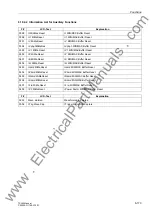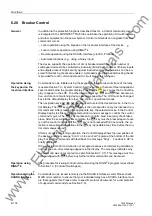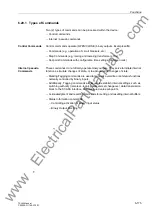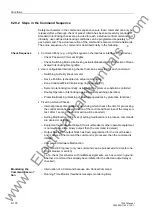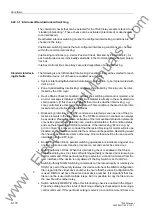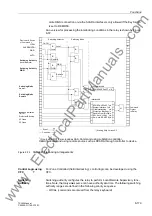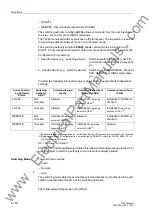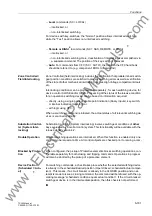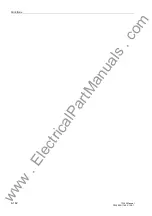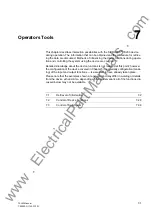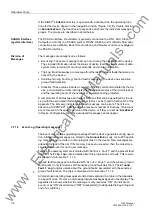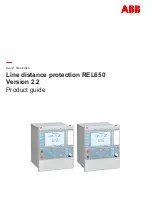
Functions
6-171
7SJ63 Manual
C53000-G1140-C120-1
Waveform Capture
Waveform capture of faults is executed only when Address 0104
26&)$8/75(&
is set for
(QDEOHG
Other settings pertaining to waveform capture are found under
the
26&)$8/75(&
sub-menu of the
6(77,1*6
menu.
The trigger for an oscillographic record and the criterion to save the record are deter-
mined with the setting of Address
:$9()25075,**(5
. With the setting
6DYH
Z3LFNXS
, the trigger and the criterion for saving are the same – the pickup of a
protective element. Another option for Address
is
6WDUWZ75,3
A trip com-
mand issued by the device is both the trigger and the criterion to save the record with
this setting. The final — and more commonly used — option for Address
is
6DYH
Z75,3
The trigger under this setting is the pickup of a protective element (first el-
ement to pick up) and saving of the waveforms occurs only if the device issues a trip
command. Each setting for Address
has specific advantages. The choice de-
pends primarily on the expected duration of faults, the time period of a complete fault
duration that is of most interest (e.g. inception or clearing), and the frequency of wave-
form capturing that is to be expected.
There are two options available for the coverage of oscillographic recording. The se-
lection is made under Address
:$9()250'$7$
and is based on the user’s
preference for recording events that occur while automatic reclosing is performed by
the device. With the setting
)DXOWHYHQW
waveform capturing occurs each time the
recording trigger and save criterion are established. If automatic reclosing in the de-
vice is employed, the second option
3RZ6\V)OW
can be selected if desired. With
this setting, the entire course of a fault - from inception, through reclosing, to clearing
- is captured. This option provides detailed data for analysis of the entire fault history;
however, the option also requires considerable memory for recording during dead
times.
An oscillographic record includes data recorded prior to the time of trigger, and data
after the dropout of the recording criterion. The user determines the length of pre-trig-
ger time and post-dropout time to be included in the fault record with the settings in
Address
35(75,*7,0(
and Address
32675(&7,0(
The set-
tings depend on Address
and the information desired. For example, consider the
trigger being a pickup of a protective element and the save criterion being a trip. The
pre-trigger time is set based on the amount of pre-fault information that is desired. The
post-dropout time is set based on the amount of information desired after clearing (e.g.
checking for restrikes).
The maximum length of time of a record is entered in Address
0$;/(1*7+
The largest value here is 5 seconds. A total of 8 records can be saved. However the
total length of time of all fault records in the buffer may not exceed 5 seconds. Once
the capacity of the buffer is exceeded the oldest fault is deleted , whereas the new fault
is saved in the buffer.
An oscillographic record can be triggered and saved by a change in status of a binary
input or via the operating interface connected to a PC. The trigger is dynamic. The
length of a record for these special triggers is set in Address
%LQ,Q&$37
7,0(
(upper bound is Address
). Pre-trigger and post-dropout settings in Ad-
dresses
and
do not apply. If Address
is set for “
∞
,” then the length
of the record equals the time that the binary input is activated (static), or the
0$;
/(1*7+
setting in Address
, whichever is shorter.
www
. ElectricalPartManuals
. com

















